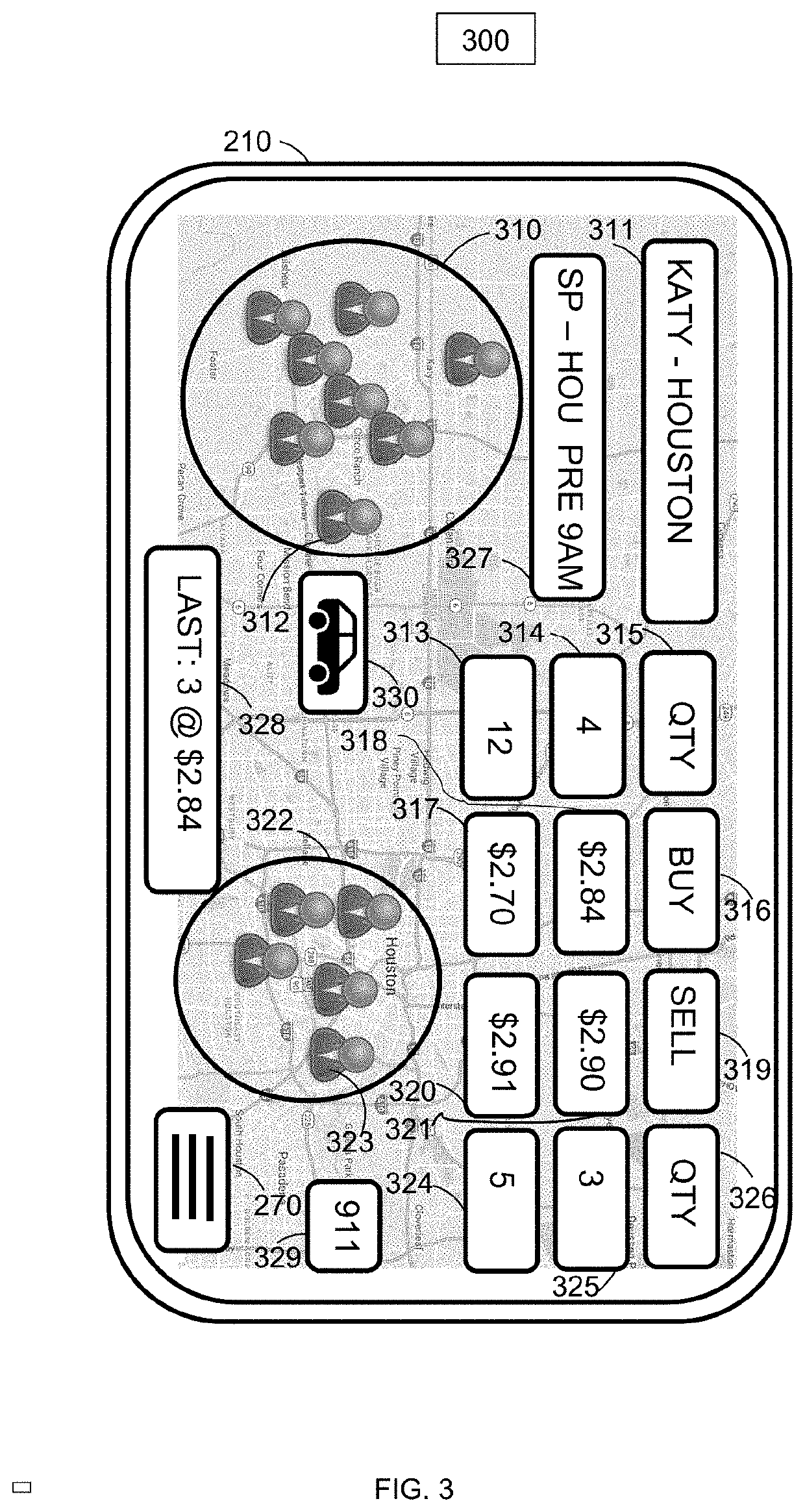Further, most implementations of methods do not allow price discovery between various sellers and buyers of transportation because the systems are disparate and are not open access or transparent.
Additional competing implementations of methods do not allow for forward selling or forward
purchasing of transportation seats, freight or capacity beyond a single transaction which a commodity forward market allows through the systems and methods.
An open and transparent market allows for large increases in price discovery and by economic theory results in the lowest possible price for consumers.
City planners from New York to Austin to San Francisco to Paris to Mumbai to Tokyo to Beijing to Sao Paulo or Johannesburg all struggle to see how the future options of transportation will shape city planning.
City planners have large concerns that when markets move to autonomous cars that cities will still have massive congestion problems if people continue to ride as a single passenger in one car.
The
alternative methods do not allow a free market
mechanism based on price to allow any driver of transportation services to move to the “front of the
queue” due to price alone which is the function of a free and open forward market for transportation.
Additionally, no prior art
system or method proposes a technically capable solution of integrating the technical
software and hardware requirements for integrating the tasks of a network, GPS
system,
mobile computing devices, servers, forward commodity markets, grouping
software for hubs, transparent open access pricing systems,
blockchain audit, safety methods and systems, virtual hub systems, algorithms for no arbitrage conditions in a simple easy to use
graphical user interface format for mobile or
virtual computing over various mediums which are connected via a network.1) U.S. Pat. No. 6,356,838 issued Mar. 12, 2002 to Sunil Paul discloses a method, system and program for determining an efficient transportation
route.
It is very clear the result of the methods and systems of the prior art has contributed to increased congestion and traffic unlike the proposed methods and systems.
The prior art clearly addresses a comparing function to determine the lowest cost
route to move from one point to another point however the prior art is completely void of providing an open access transparent forward commodity market for individual capacity units to place the method of a market over the system which would then allow for dramatically lower and more efficient prices and utilization would increase dramatically as supply and demand forces would force the market to balance through price.
Accordingly, the prior art is not comparable from a market method and system basis or from an efficiency basis.
For the sake of
clarity, the
transportation capacity market is exclusively limited to forward physical contracts which means that the contracts are limited to be traded by only those who are actually providing the underlying service or method.
The prior art is limited to a regulated futures exchange which has a clearing house that guarantees the transactions through a highly regulated process.
By contrast forward contracts carry default risks.
The prior art claims limit are limited to futures where there are margin requirements and periodic margin calls by which cash may change hands daily.
A service of the prior art would not be able to group users using a virtual hub
pooling server which would then combine with another virtual hub or combination of hubs to make a tradable commodity unit, again therefore rendering the prior art as incapable of delivering or even rendering the service.
The prior art is technically incapable of providing the software or hardware that would allow for the completion of a transaction between two users in any of the claims.
The issue in the Alice case was whether certain claims about a computer-implemented, electronic
escrow service for facilitating financial transactions covered abstract ideas ineligible for patent protection.
The patents were held to be invalid because the claims were drawn to an abstract idea, and implementing those claims on a computer was not enough to transform that idea into patentable
subject matter.
In this specific case, the Supreme court gave a two-
step test which McDonough would follow the precedent of Alice in that they are simply borrowing the concept of a futures exchange without a novel technical method or system as to facilitating a transaction and as we clearly present in our arguments, the prior art could not facilitate a transportation futures contract implementation because there is no
mobile technology to
route riders which renders the implementation non-feasible.
Further there is no specific computer system or unique program which is novel in the implementation other than regurgitating back the business method of a prior art exchange and then applying it to the
abstract concept of applying the existing prior art to service contracts.
Accordingly the prior art does not necessarily lead to the most efficient outcome.
Further, the prior art would struggle to stand the light of Alice additionally considering Bilski v. Kappos that the idea of grouping people with GPS is an abstract idea and does not apply to a specific novel example of transportation, transportation as a commodity, unique transportation contract specifications, uniquely defining transportation capacity as seats or cargo space, transportation to define a virtual or actual hub or hub series topology in the context of a forward contract market for transportation.8) U.S.
Patent Application No.
A commodity market for transportation or freight capacity is only viable where there is ample liquidity for substitution.
 Login to View More
Login to View More  Login to View More
Login to View More 









